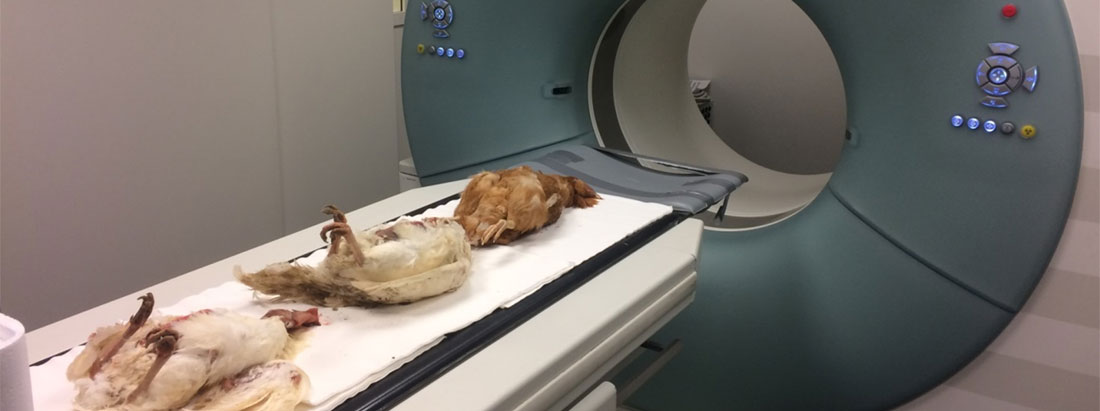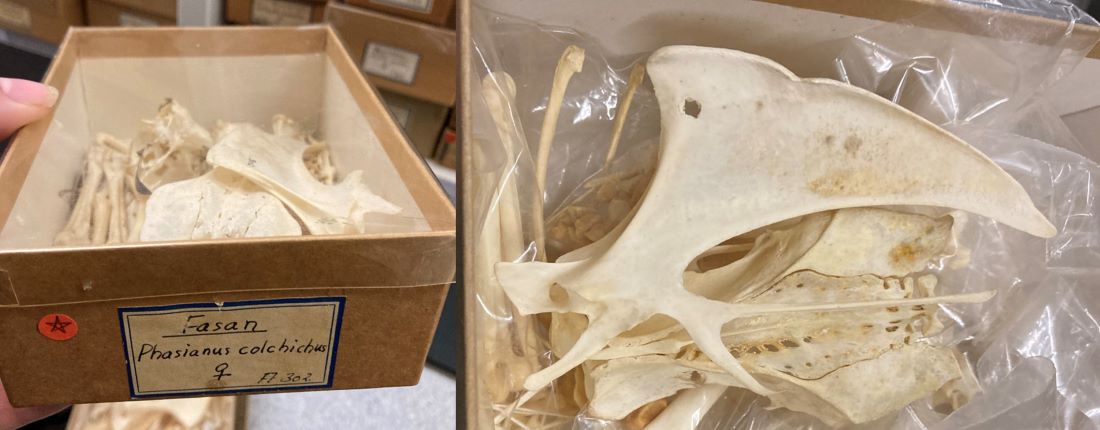Poultry Diseases: The Christensen Group
The main purpose of the group is to study various aspects of different poultry diseases. The focus is on bacterial infections but viral and non-infectious diseases are also of interest. Epidemiology and pathogenesis of diseases are key areas using agent characterization, pathology and in vivo infection models as the most important tools.

|
Globally, poultry production is increasing due to many positive aspects concerning this source of animal protein. However, diseases and zoonotic infections affecting food safety continue to be of concern. In our group we focus on the understanding of production diseases including bacterial infections caused by Gram positive cocci and E.coli using microbiological methods and in vivo infection models. These infections taken together accounts for up to half of the non-outbreak related mortality observed in commercial settings. Consequently, understanding and controlling these infections will have a major positive impact on the production. In addition, the experienced increase in free range production over the years requires focus on routes of transmission of more exotic infections. Recent years, non infectious conditions such as keel bone fractures affecting animal welfare and productivity also has become a major research area of the Christensen group |
Significant impact of strain and host factors on the clinical and pathological outcome
By the use of a infection model developed by the group we were able to demonstrate E.coli strain variation concerning disease causing capability. In addition, differences in susceptibility to infection between meat type hens and layers could be observed.
Rikke Heidemann Olsen, Ida Cecilie Naundrup Thøfner, Susanne Elisabeth Pors, Jens Peter Christensen (2016). Experimental induced avian E. coli salpingitis: Significant impact of strain and host factors on the clinical and pathological outcome. Veterinary Microbiology. 188, s. 59-66 8 s
Correlation between footpad lesions and systemic bacterial infections in broiler breeders.
The observation that older birds with poor foot pad health often develop systemic Gram positive infections resulting in mortality and decreased welfare was clearly demonstrated in the following study.
Ida Cecilie Naundrup Thøfner, Louise Ladefoged Poulsen, Magne Bisgaard, Henrik Christensen, Rikke Heidemann Olsen and Jens Peter Christensen(2019). Correlation between footpad lesions and systemic bacterial infections in broiler breeders. Veterinary Research 2019 50:38. https://doi.org/10.1186/s13567-019-0657-8
Pathological characterization of keel bone fractures in laying hens does not support external trauma as the underlying cause
Submitted to PlosOne: In a cross disciplinary study, it was demonstrated that the commonly accepted hypothesis that external trauma causes keel bone fractures in layers cannot be the the only explanation for this condition.
The project aimed at establishing an experimental model for keel bone fractures in egg laying hens. The experimentally induced fractures was described in detail and the results compared to the spontaneously occurring fractures. The results provided new insights to the pathogenesis of the fractures.
Additionally an observational study investigated the importance of the onset of lay. Flocks with different age at the onset of lay were followed through the production period in order to map out differences in the prevalence of the fractures.
The project was funded by "Fjerkræafgiftsfonden".
Ida Thøfner, Hans Petter Hougen, Chiara Villa Niels Lynnerup, and Jens Peter Christensen (2019). Pathological characterization of keel bone fractures in laying hens does not support external trauma as the underlying cause. Submitted to PlosOne

Kortlægning af brystbenbrud hos fasanhøner
Brystbensbrud er det største velfærdsproblem hos konsumægshøner. I løbet af de seneste 10 år er der set en stigning i forekomsten. Vores egne undersøgelser af konsumægshøner bekræfter den høje forekomst (>85% af høner) uanset produktionssystem. I mindre undersøgelser af Røde Junglehøner fra zoologiske haver sås en forekomst af brystbensbrud på omkring 10% af høner. Ægydelsen har stor betydning for forekomsten af brystbensbrud. Dette ses ved at haner eller høner med hormonel blokade af æglægning ikke får brud, hvorimod konsumægshøner har en høj forekomst. Fasanhøner i fangenskab lægger omkring 40-60 æg på en sæson, hvilket er på samme niveau som junglehøner.
Det er imidlertid helt ukendt i hvilket omfang vilde hønsefugle, som f.eks. fasaner, har brystbensbrud. Anekdotiske observationer antyder at brystbensbrud også ses hos vilde fugle, heriblandt fasaner. Da fasaner på ingen måde er selekteret med henblik på ægydelse har dette selektionspres ikke påvirket risikoen for brystbensbrud.
Efter endt æglægning vil fasanhøner fra forskellige fasanopdræt blive undersøgt for brystbensbrud. Her ved opnås helt ny viden om forekomst og omfang af brystbensbrud hos vilde hønsefugle i Danmark.
Det forventes at den opnåede viden kan indikere hvor lavt en forekomst af brystbensbrud man opnå i forbindelse med fremtidig avl af konsumægshøner.
Projektleder Ida Thøfner, email icnt@sund.ku.dk
Bevillingsgiver: Fjerkræafgiftsfonden
Group/project members
Internal researchers
| Name | Title | Image |
|---|---|---|
| Al-Saeedi, Tahseen Abbood Suwaihi | PhD Student |
|
| Christensen, Jens Peter | Professor with special responsibilities |
|
| Lund, Vibe Pedersen | PhD Fellow |
|
| Thøfner, Ida | Associate Professor |
|

